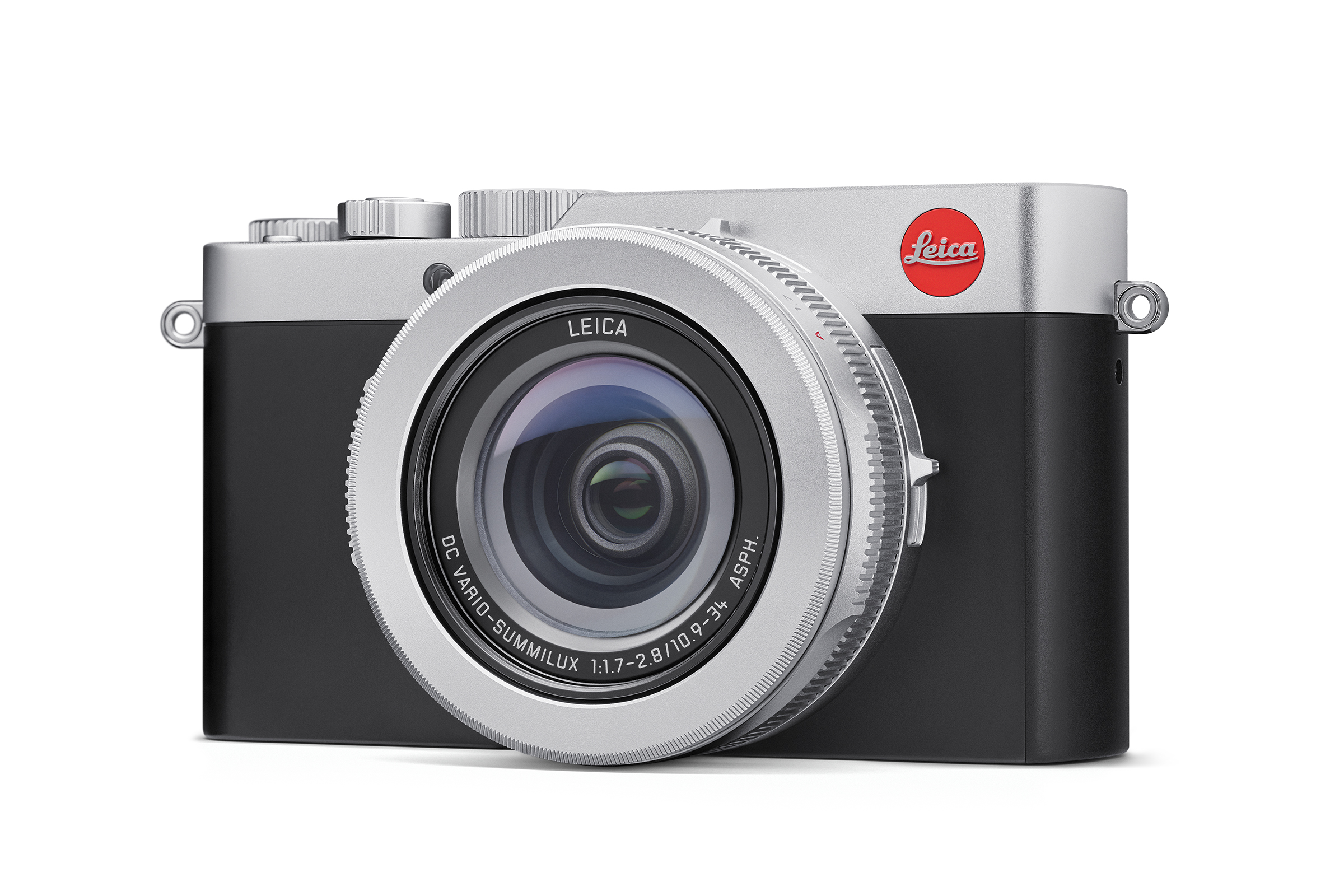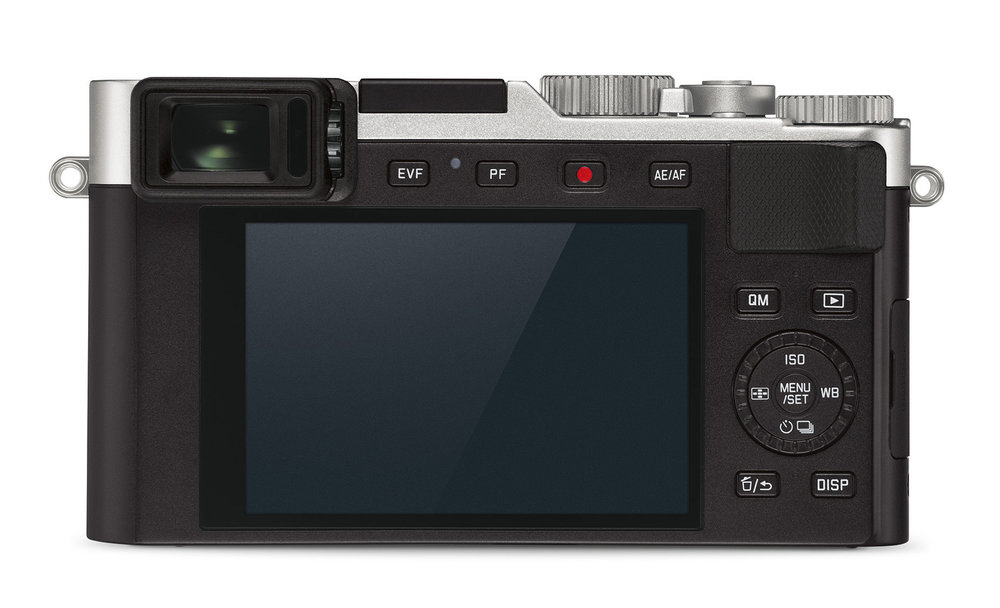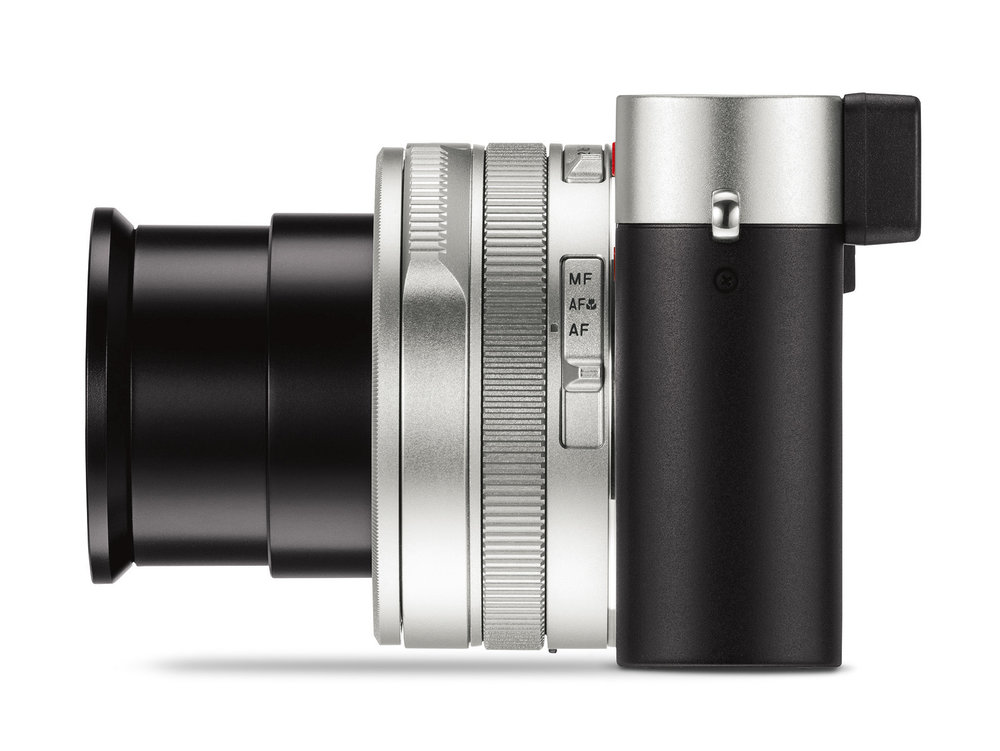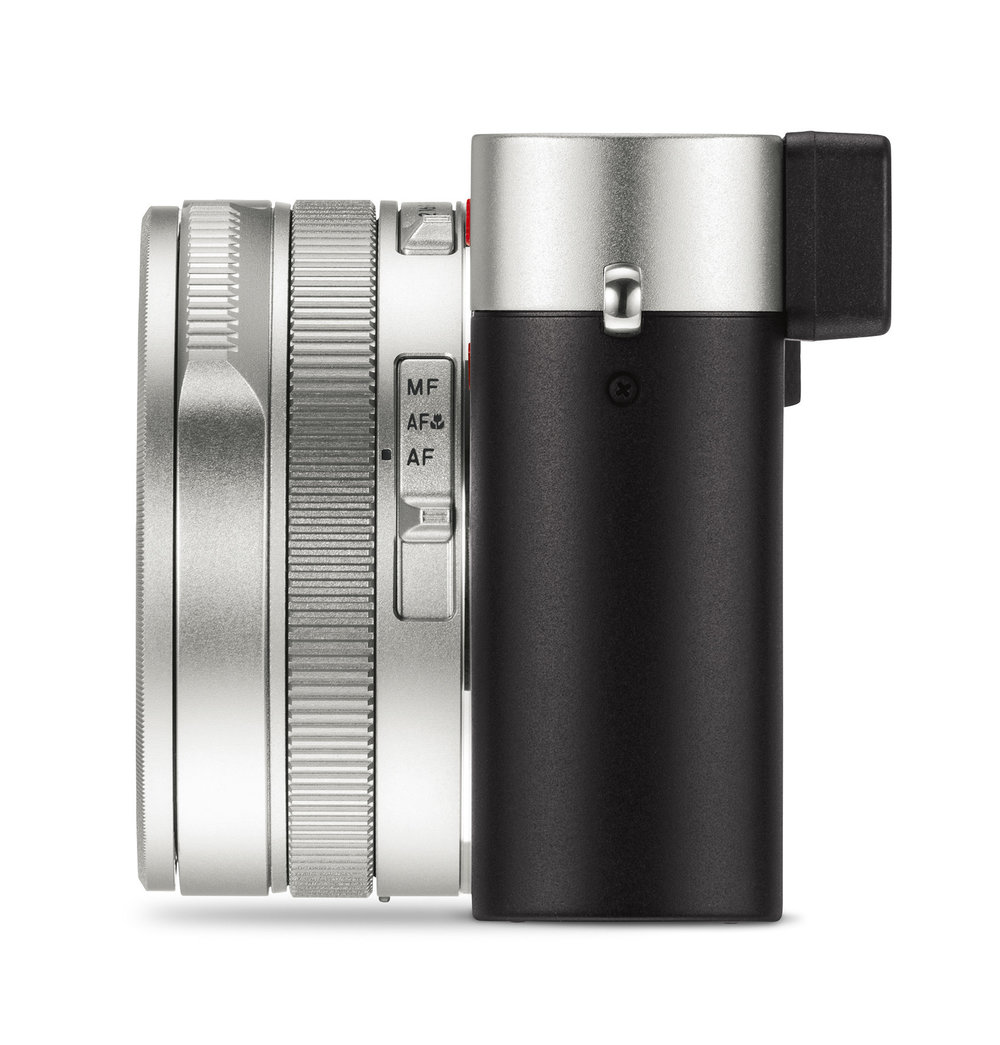
The long-awaited Leica D-Lux 7 is announced today and will be available from this week in what I think is a stunning silver-and-black finish. The last D-Lux came only in black (apart from special editions), and the decision to launch the D-Lux 7 in silver is a masterstroke. There is no news on a black version, although it could appear in the future.

The silver anodised top plate transforms the rather drab Panasonic LX-100 Mk II (the basis of the D-Lux) into a very desirable piece of photographic equipment. It looks like a true mini Leica rather than a reworked Panasonic as did all previous D-Lux versions. There is also excellent news on price: £995, including VAT, is lower than I expected and is only £146 more expensive than the equivalent Panasonic. When desirability, the new silver finish and better resale values are taken into account, the Leica is a better long-term bet than the LX 100 II. Overall ownership cost is likely to be lower.
The overall design of the D-Lux shows that Leica has made a real effort to distance its model from the basic LX-100 Mk.II. Look closely, and the cameras are virtually identical, barring the loss of the Panasonic’s shallow hand grip, but the silver finish makes the camera.
As with the previous model, the D-Lux (in retrospect, this is now the D-Lux 6.5, halfway between the D-Lux 6 and the D-Lux 7) sports a cropped 4/3 sensor. Instead of the 2x of the standard micro four-thirds sensor, the D-Lux has a 2.2 crop. However, it is still significantly bigger than the 2.7x crop one-inch sensor.
The crop accounts for the new camera’s oddball 17 MP sensor. I believe this is probably the same 20MP sensor seen in other Panasonic m3/4 models; it’s just that less of it is used in picture taking.
Despite the gestation period, the D-Lux 7 is not a huge set forward from the old model in technical terms. It retains the same (excellent) f/1.7-2.8 Summilux lens with a 35mm-equivalent zoom range of 24-75mm. The viewfinder is now a high-resolution 2.8MP device but keeps LCD technology rather than the more modern OLED display. The 3in, 1.24MP touch display is static, as with previous models, and this will be a disappointment to some buyers who had been expecting a cantilevered design.




In general, Panasonic (and thus Leica) has avoided change for change’s sake and has acknowledged that the previous model was pretty damned good. Above all, the D-Lux is a camera that appeals to the more experienced photographer, allowing full manual operation and a clear and traditional control set which covers all the necessary settings without having to consult to menus. The top plate carries dials for shutter speed and exposure compensation and a clearly marked on-off switch. An A(uto) shutter speed setting can be used in conjunction with variable manual apertures for aperture priority. Conversely, the A setting on the lens is used for shutter priority mode. Choosing both A settings puts the camera into fully automatic mode.
As with previous models, the lens offers a slider switch to change the aspect ratio (3:2, 16:9, 1:1 and 4:3) which D-Lux users appreciate. As far as I know, this is a unique feature of the D-Lux models.
Leica has done a truly excellent job with the D-Lux 7, and it deserves to be successful. As a handy, compact travel camera with superb optics and image quality, it has few equals.
Related Posts
D-Lux announced, September 2014
What’s in a name? D-Lux 6, D-Lux 6½ , D-Lux 7
LEICA PRESS RELEASE
Press Information
Free for release after: 20th November 2018 at 3 p.m. (CET)
Leica D-Lux 7: compact size meets high performance.
Wetzlar, 20th November 2018. Introducing the new and improved Leica D-Lux 7: the high-performance compact camera from Leica Camera AG featuring a fast Leica DC Vario-Summilux 10.9–34 mm f/1.7–2.8 ASPH. zoom lens (equivalent to 24–75mm in 35mm format). The new Leica D-Lux 7 boasts a new, higher-resolution four-thirds sensor that delivers outstanding picture quality in all shooting scenarios. The D-Lux 7 enhances performance through numerous new functions and features including a touchscreen display, Bluetooth connectivity and USB-C charging capability. The Leica D-Lux 7 is the ideal everyday companion; an extremely versatile camera that offers maximum photographic freedom for capturing unique moments with impressive quality.
The comprehensive features of the Leica D-Lux line – automatic exposure mode, manual setting options and a range of video functions – are perfectly complemented by an integrated, 2.8-megapixel, high-resolution, electronic viewfinder, a Wi-Fi module and Bluetooth connectivity. On the back of the Leica D-Lux 7, a 1.24 megapixel 3“ LCD touchscreen display not only makes viewing pictures much easier, but also means the user has easy control of the camera at their fingertips. For example, the focusing point can now be set with a simple tap on the screen and pictures can be taken without having to touch any other controls.
Inherent with all Leica cameras, the DC Vario-Summilux zoom lens of the D-Lux 7 is perfectly matched to the camera’s new sensor to deliver optimum picture quality. The fast aperture and the range of focal length make the camera particularly versatile in every situation – from portraits and landscapes to architecture, macro close-ups and street photography. With its 17-megapixel resolution and a maximum ISO sensitivity of 25600, the four-thirds sensor of the Leica D-Lux 7 is also ideal for capturing the highest-quality images in low ambient light, with natural colours and fine rendition of details.
The camera’s hardware has been improved and includes various additions to its range of functions. For example, the focus point of exposure can be changed after shooting, or several exposures with different focus points can be superimposed on each other and merged with the aid of Focus Stacking, for instance to create a greater depth of focus in macro exposures. The camera’s capabilities have also been expanded to include video recording in 4K resolution – at a frame rate of up to 30 frames per second and 100 Mbit and in MP4 and AVCHD-format.
The Leica D-Lux 7 is the first camera in the D-Lux line that can be used together with the Leica FOTOS App which enables remote control of the camera from a smartphone and fast and easy wireless transfer of pictures from iOS or Android devices. Photographers can use numerous options for sharing their pictures directly on social media after editing and carrying out all the essential post-production work in app.
The classic look of the Leica D-Lux 7, is complemented with a range of equally stylish and practical accessories such as high-quality cases, carrying straps and a practical handgrip.

Have to say I had the Lumix LX100 then bought the Typ 109 and much prefer it the build quality just seems better (nothing scientific to prove that statement). I was dreading the new version having a tilting screen because that is the only thing I think is lacking on the Typ 109 and I would have lost loads of money in the upgrade. Happy I don’t need to lose the money now as my Typ 109 is sufficient as it is.
any idea what the menu looks like, always interesting with Leica
Haven’t handled the camera yet, but I expect it to be similar to the menu of the LX100 II, which in turn was similar to the LX100 and D-Lux 6.5. It’s pretty standard Panasonic fare, but I find it intuitive and easy to navigate. I hope to try a D-Lux 7 within the next week and I will be writing an initial assessment.
Hurrah ! This is the replacement for my D-Lux 4 that I’ve been waiting for! And I think the improvements over the 6.5 make it even better. Now I will part with the DL4 and the RX1000iii, and see if I can be patient until they are sold or put in my order now!! For this jewel I can bear the absence of tilting EVF or screen. Thanks, Mike, for such a quick posting.
I have the D-Lux 109 and recently bought the Panasonic LX100 mark II, I will probably trade both in for the hew D-Lux 7 – not necessarily for image quality (but maybe even this is slightly different given Leica firmware), but rather for build quality – the D-Lux 109 was far sturdier and less "plastic" than the Panasonic and I prefer the Leica firmware and menu system – also it seems they have tweaked the on-off switch, which is still small and picky on the Panasonic. The silver is beautiful too!
An interesting observation, Tony. I hadn’t thought much about the construction of the body, merely assuming that it was the Panasonic base without the grip. Nor have I examined the LX100 in detail. From what you say, it looks like Leica has done some basic tweaking to the construction — which makes an even better case for buying it over the LX100. I agree that the silver finish is great and I would definitely buy this camera over the black, bland LX100 Mk.II. I’d previously said that it probably wasn’t worth upgrading from the 109 but, now I’ve seen the new camera, I think many owners will be sorely tempted.
I have the Lumix LX100 (first version) and it is an excellent camera. Up to recently, I had been using it as a ‘back up’ for my M10, but on recent trips to Wetzlar and London, I just used my Huawei P20 (with Leica lens ) and iPhone 8 as ‘back ups’. It made for a lot more space in my Billingham bag and fewer chargers etc. As for the question about which is better, I suspect that this is an example of the old GM/Ford concept of ‘badge engineering’, but the terms of the (probably two way) licensing agreements between Panasonic and Leica may forbid either company from emphasising differences or making comparisons. I see that this one works with FOTOS, but my M10 has still not got past the FOTOs ‘gatekeeper’ and prefers the Leica M app which seems to do exactly the same thing. Going back to the ‘back up’ camera concept, with either of my smartphones, I am immediately able to share photos that I have taken with the phones. I am still waiting for a compact camera that has its own in-built apps and communications that do away with communicating via a phone.
This is a nice little camera, but it won’t replace my LX 100 to the extent that I still use it.
William
A dumb question: Does D-Lux have better color than Lumix? Does it use Leica image engine?
This an often-posed question, not only in relation to the D-Lux but also to the V-Lux and X-Lux. Leica will hint that there is a difference, but I don’t think they’ve made any statements. I would buy the D-Lux 7 for its looks and image, not in the hope of it bettering the results obtainable from the LX100
Mark II. I have always assumed that technically these cameras are identical
Looks like I am going to have to make a case for this one – lovely looking camera
http://www.classiccases.co.uk